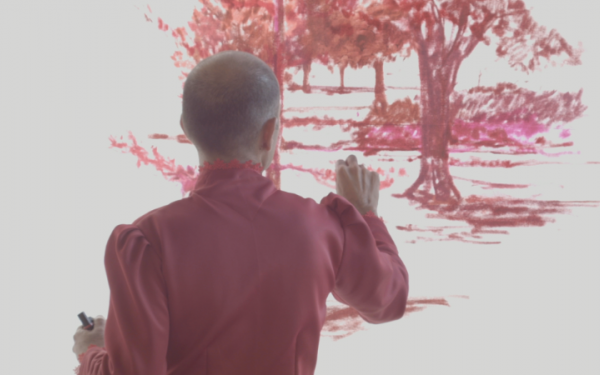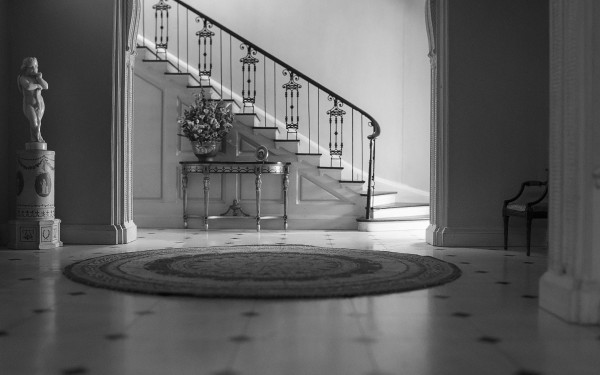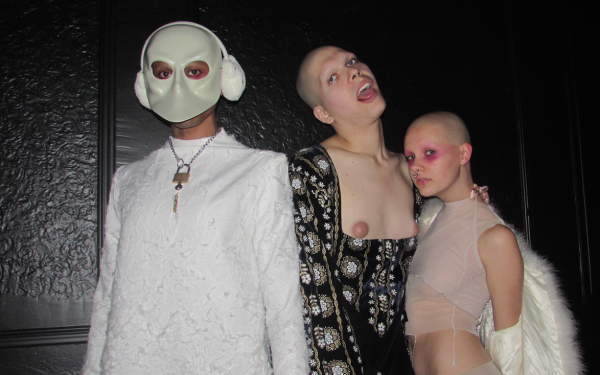An Artful Resistance
CEREV Exhibition Recalls Pinochet’s Totalitarian Rule
The haunting voice of Chilean artist Victor Jara played somberly in the background amongst a collection of photographs and artwork that portray the story of a dark and forgotten chapter in South American history.
A shadowy image of a man on his knees captures my eye immediately. Armed soldiers surround him, and it becomes clear that the man in the photo is begging for mercy. Such brutality characterizes the reign of Chilean dictator Augusto Pinochet, the man responsible for unleashing 17 years of terror and bloodshed upon the people of Chile.
To commemorate this dark period, Concordia’s Centre for Ethnographic Research and Exhibition in the Aftermath of Violence opened an exhibition that encapsulates the years of Pinochet’s totalitarian rule. Artifacts were brought in exclusively from the Museum of Memory and Human Rights in Santiago, and divided thematically into three separate portions: the coup, the resistance, and finally freedom, offering a more palatable framing of Pinochet’s control.
But who was the man, hidden behind the rule?
Pinochet was originally a military commander, gaining power in 1973 after leading a successful coup against the democratically elected socialist government. He assumed power under the veil of a military council, but soon consolidated complete control over the country. The American government supported the coup financially, ostensibly to prevent the long-term spread of communism—an example of the containment doctrine during the height of the Cold War.
“Chileans of the middle and upper class would have supported the coup d’état,” explained professor Cynthia E. Milton, who is a Canada Research Chain in Latin American history at Université de Montréal. This was the origin of the cacerolazos in Chile, middle-class conservative women banging their empty pots and pans against the Allende government. “[They most likely thought] order would be established, and then coup d’état would transition back to a civil government.”
This is a surprising revelation, implying that ordinary citizens believed Pinochet was a temporary fixture. He would rule instead as an absolute monarch for the next two decades, turning Chile into a bloodbath.
In the days following the events of the coup, the new government set out to crush all opposition through the use of kidnap, torture, murder and exile. Torture centers were established and people began to go missing, tearing families apart, orphaning young children and disseminating a sense of fear throughout Chile. The black and white photographs that line the walls of this small gallery really capture this sentiment, the encompassing dread of fearing one’s government.
Instances of human rights crimes include the infamous case of the Estadio Nacional, the national soccer stadium in Santiago turned government torture site. Hundreds, if not thousands, of innocent civilians were detained there, including the aforementioned talent Victor Jara.
Jara was a famous musician and political activist, and was viewed as a dissident to the new regime. He was ordered to report to the stadium, where he was repeatedly tortured and eventually murdered. When they found his body dumped on the street, his wrists and hands were completely disfigured and his body riddled with bullets. He inevitably became one of the martyrs against the regime, and it’s no coincidence his voice echoes eerily over the speakers throughout the exhibition.
From 1973 until 1990, the Chilean people endured the wrath of this totalitarian dictator, living in constant fear of ending up in a government dungeon.
“We tend to think of the dead and disappeared as limited to the early years of the dictatorship, but the violence was throughout,” said Milton. “Over 35,000 people were tortured [according to the Valech Report in 2005], which is an astonishing number.”
This included the current president of Chile, Michelle Bachelet, whose family was detained and tortured by the secret police. Her father died while imprisoned, but she managed to escape and seek refuge internationally.
Over the years, resistance gained momentum against Pinochet, especially abroad amongst exiled Chileans, who put pressure on foreign governments to condemn the regime. Within the country, ordinary citizens began creating artwork expressing their discontent and anger towards the government.
“Art played an important role as a form of resistance,” added Jennifer Carter, museology and art history professor at UQAM. “The Museum of Memory and Human Rights has a lot of documentary evidence, but it also has artwork made by political prisoners.”
In 1988, Pinochet held a referendum to ask Chileans if he should remain in power, a bold move to say the least—54.7 per cent of the population defiantly voted no, signaling their desire for a new government. Although it took years for Pinochet to fully relinquish all of his powers, Chile eventually emerged as a democracy again. Pinochet was never tried for his crimes, although there were many attempts to charge him for crimes against humanity both in Chile and abroad. He died in 2006.
CEREV’s exhibition gives a renewed understanding of what happened over the course of those 17 years under Pinochet. Through photography, sound and artwork, the exhibition serves as a strong reminder to never take our freedom for granted and to never allow any government to brutalize and massacre its people.
Itinerant Exhibition of The Museum of Memory and Human Rights // Until Oct. 22 // Monday to Friday, 1 to 5 p.m. // CEREV Exhibition Lab (1400 de Maisonneuve Blvd. W., room LB 671)



TheCube_820_373_90_600_375_90_s_c1.jpg)

